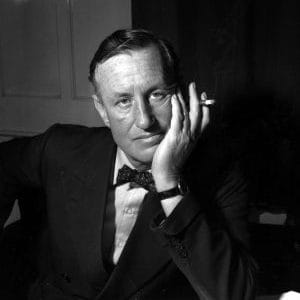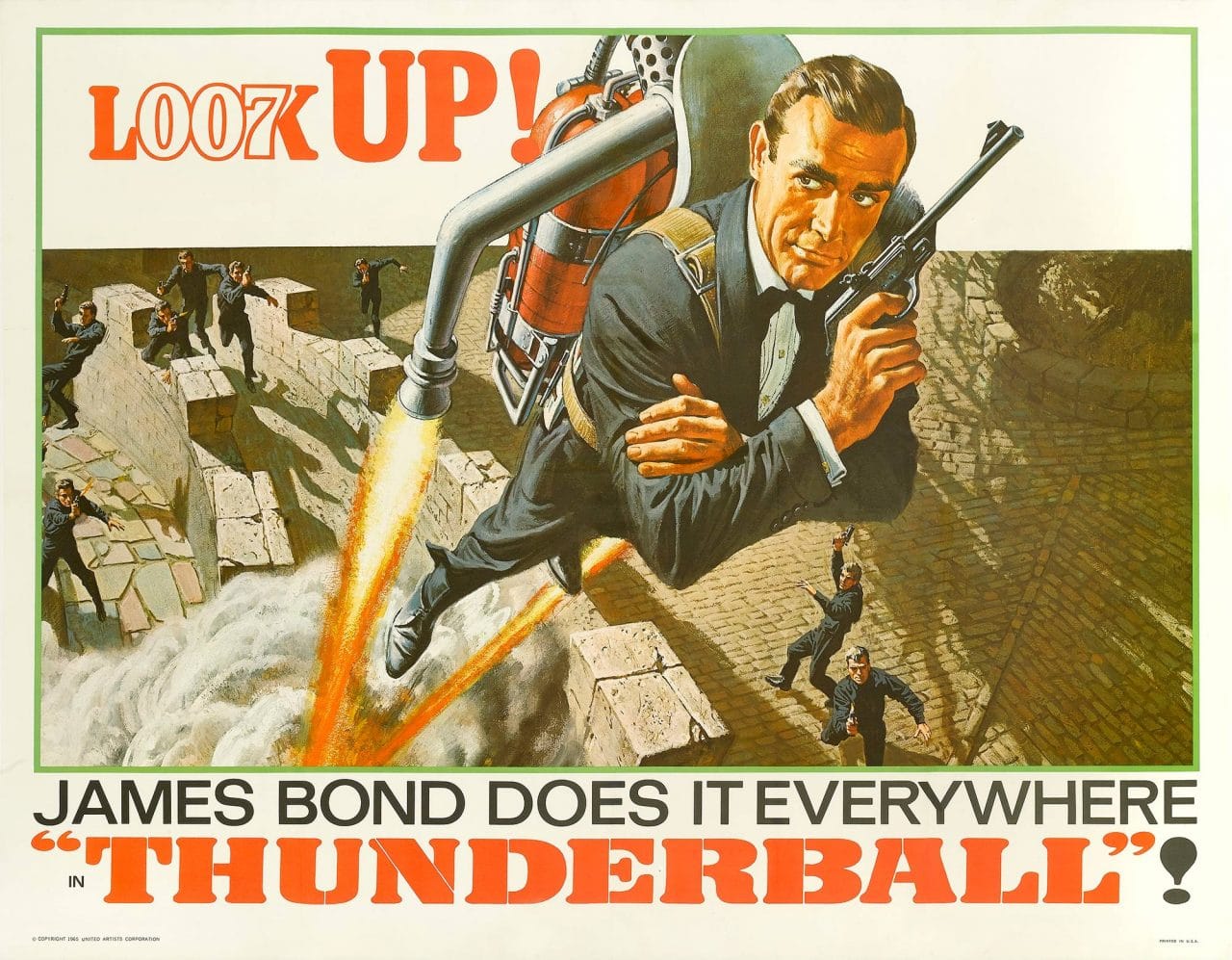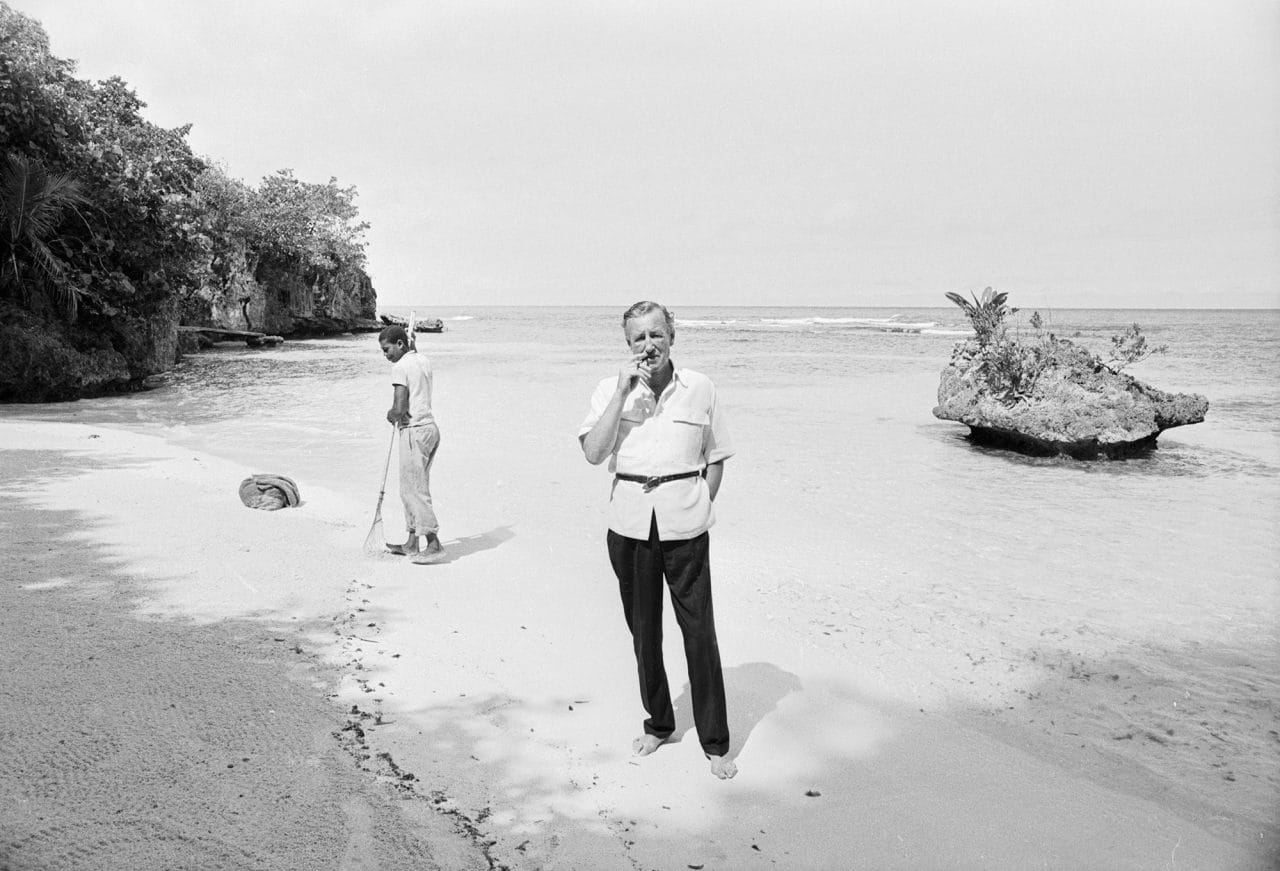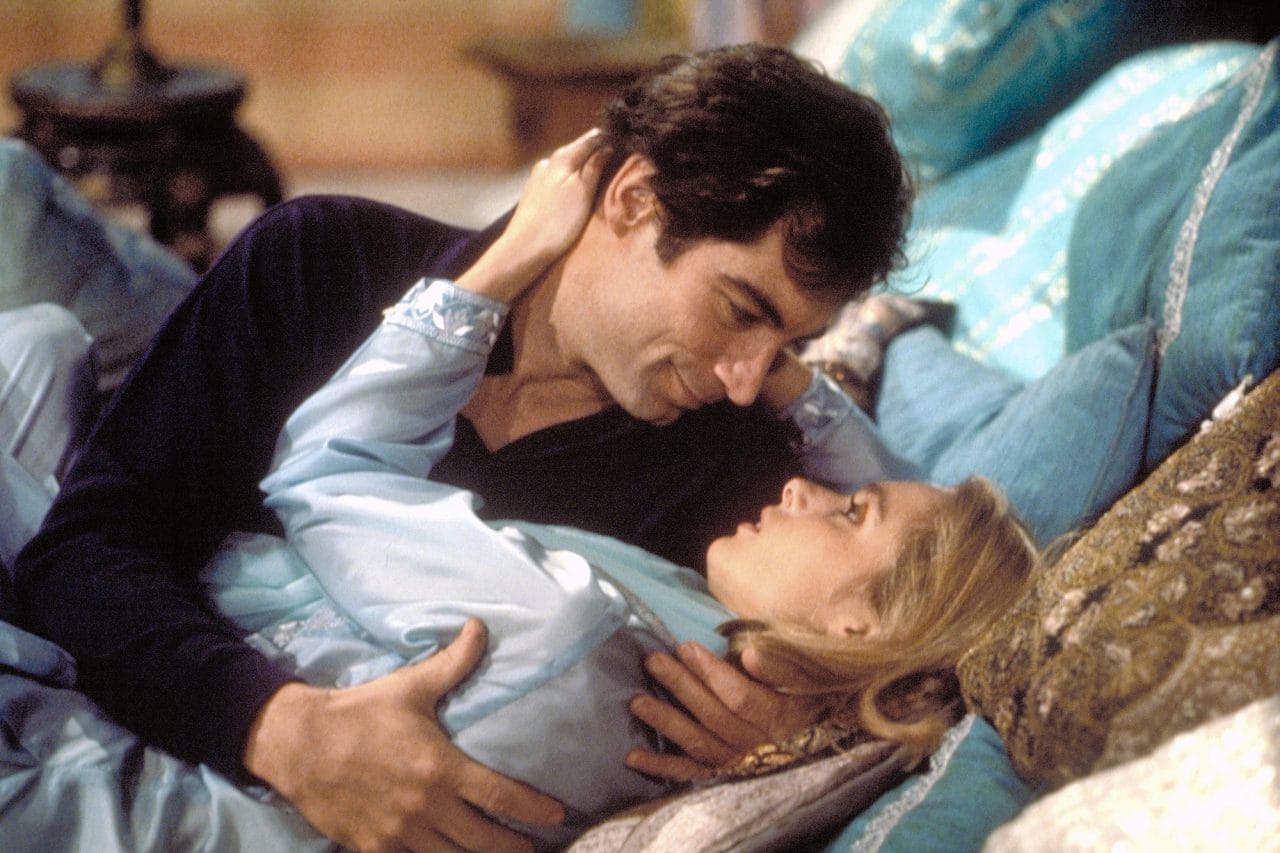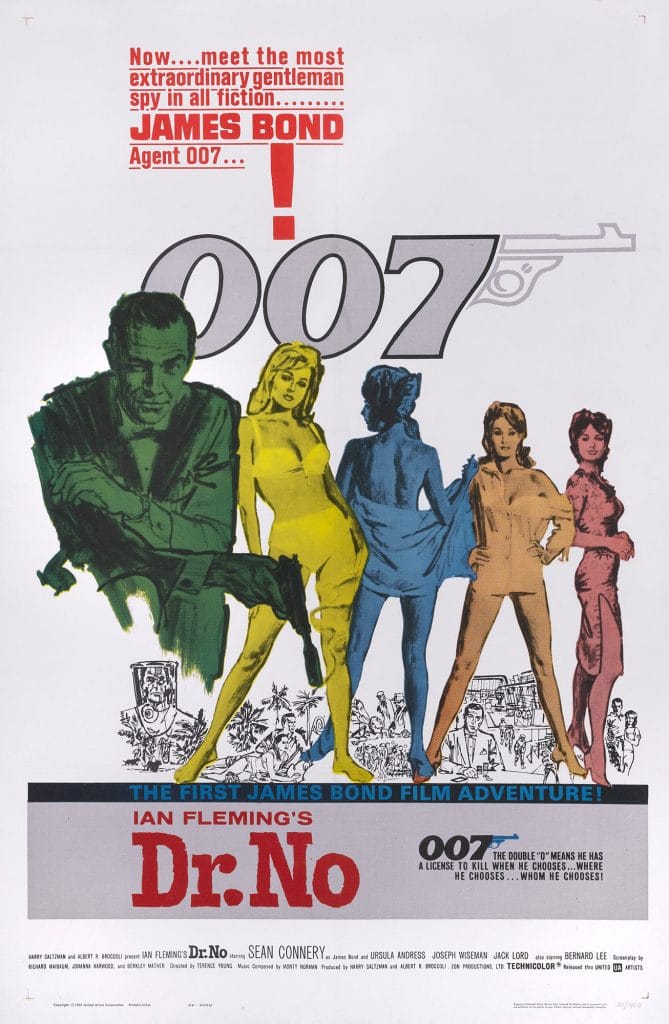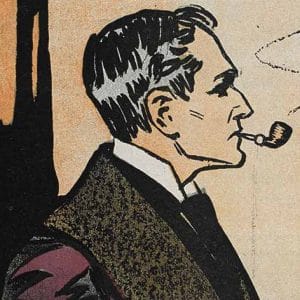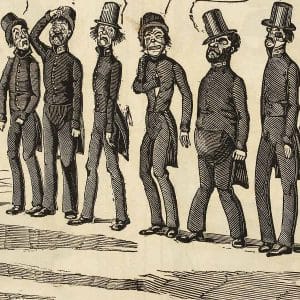
Ian Fleming’s James Bond Short Stories
出版日期: 1962 文学时期: 20th century 类型: Spy Fiction
James Bond, also known by his code number 007, is the suave and stylish British Secret Service agent depicted in a series of 12 novels and two collections of short stories by Ian Fleming. Following Fleming’s death in 1964, Bond has appeared in a succession of novels written by other authors, including Kingsley Amis, Sebastian Faulks and William Boyd. More famously still, Bond has become an icon of the silver screen: the James Bond film franchise began with Dr No in 1962 and continues to this day. Bond even enjoyed a role in the opening ceremony for the London 2012 Olympics – escorting Her Majesty Queen Elizabeth II as she parachuted (or so it appeared) into the Olympic Stadium.
Introducing Bond
James Bond, rather like Sherlock Holmes or Harry Potter, is one of those fictional characters whose iconic cultural status needs almost no introduction. We may not have read Ian Fleming’s original spy novels; we may not have seen the Bond films starring actors Sean Connery, Roger Moore and Daniel Craig; but fans around the world know that the name James Bond means action, glamour, excitement and adventure. The appeal of Bond is unique. We admire Sherlock Holmes’s intellect, and marvel at the magical world of Harry Potter, but when it comes to Bond we simply want a taste of his alluring lifestyle. As the author Kingsley Amis put it in his appreciation of the Bond phenomenon, The James Bond Dossier: ‘We don’t want to have Bond to dinner or go golfing with Bond or talk to Bond. We want to be Bond’ (Chapter 3).
Bond has come to define a certain type of quintessential British hero. He is arguably old-fashioned and stern, but he is not without considerable magnetism and style – quite an achievement for a character Fleming originally conceived of as being rather dull. Fleming stumbled upon the name for his lead character when he came across a book in his own collection, Birds of the West Indies, by the American ornithologist, James Bond. In an interview for the Manchester Guardian newspaper in April 1958, Fleming explained: ‘I wanted the simplest, dullest, plainest-sounding name I could find, “James Bond” was much better than something more interesting, like “Peregrine Carruthers”. Exotic things would happen to and around him, but he would be a neutral figure – an anonymous, blunt instrument wielded by a government department’.
Glamour and exoticism
The first Bond novel, Casino Royale, was published in 1953. Thereafter the Bond books appeared at a rate of roughly one per year. Each was written at Fleming’s house, Goldeneye, in Jamaica, a place to which the author retreated to escape the harsh British winters and to enjoy the relaxed lifestyle offered by the Caribbean. Fleming’s love of the exotic would become a staple of the Bond books. The only Bond novel set wholly within the United Kingdom is Moonraker (1955) – in all of the others, Bond’s assignments take him abroad to locations such as Haiti (Live and Let Die), Istanbul (From Russia with Love), the Swiss Alps (On Her Majesty’s Secret Service) and the Japanese Islands (You Only Live Twice). At the time the series began, Britain was still recovering from the horrors of the Second World War; evidence of bomb damage was still to be seen in many parts of London, and items such as butter and sugar were still rationed. In such an environment, James Bond, with his world of beautiful women, fast cars, fine dining and foreign travel, seemed almost impossibly glamorous.
Wish-fulfilment
The character of Bond represented an act of wish-fulfilment on the part of his creator. Bond’s love of golf, gambling, fast cars and even his taste for scrambled eggs are all mirror images of Fleming’s own passions. Much of Bond’s academic background and military experience is directly comparable to Fleming’s own, and many real-life people from Fleming’s past were recast as characters in his stories.
Part of Fleming’s early education had taken place at a private school in Kitzbühel, a small town in the Austrian Tyrol. Here he learnt to speak French and German and to ski and climb mountains. His teachers included Ernan Forbes Dennis, who had worked for the British Secret Service (and provided the inspiration for the character of Hannes Oberhauser, the Austrian guide and ski instructor who appears in Octopussy) and Ernan’s wife, the novelist Phyllis Bottome, who encouraged Fleming to write. Later, during the Second World War, Fleming became the personal assistant of Rear-Admiral John Godfrey, Director of Naval Intelligence, upon whom Fleming based the character of ‘M’, the Head of the Secret Intelligence Service.
‘The Living Daylights’
‘The Living Daylights’ offers a fascinating insight into the world of Bond, and indeed into that of Fleming. The story first appeared in February 1962 within the pages of the very first glossy colour supplement issued with the Sunday Times. The tale concerns Bond’s mission to mask the escape of a British agent from East Berlin by assassinating a Russian sniper, code-named Trigger, before the sniper can shoot the British agent. Coming as it does towards the end of Fleming’s life, when ill health was beginning to take its toll, the tale is unusually stark and bleak for a Bond story. Gone are the colourful settings of the early novels, replaced by stark interiors and a patch of wasteland strewn with barbed wire that divides East and West Berlin. During the story, Bond reflects upon the brutal nature of his job and displays an intense dislike of the pressures and unpleasant acts it involves – something that would not have occurred in the earlier stories. ‘The Living Daylights’ was filmed, with Timothy Dalton in the lead role, and had its premiere in 1987. Dalton’s portrayal of the character was arguably closer to that of the books than those of Connery and Moore – a little rougher around the edges, and a little less romantic.
Fleming’s original draft of the story, held by the British Library, is revealing in a number of ways. The first few pages are typed, but the later pages are written entirely by hand. From the manuscript we can see firstly that the title for the story was initially ‘Trigger Finger’, and secondly, judging by the number of typos, we can tell that the story was written at great speed. This is quite telling in itself. Fleming maintained the same habits of composition and writing for the Bond stories throughout his life. The first draft of all the novels and short stories would be written in great haste, a quality which gives the books their typically ‘sweeping’ nature in which the reader is carried along by the sheer verve and pace of the writing. Only at a later stage would Fleming revise, rewrite and polish the manuscript, always ensuring, however, that the characteristic ‘Fleming sweep’ was maintained.
Heroes and villains
So is James Bond a latter-day equivalent to the Romantic heroes from the novels of an earlier age, or is he a symbol of decadence and corruption – a throwback to the days of imperial Britain? The answer is, of course, both.
Bond plays upon our fantasies. He lives a life in which good struggles with evil, and the two are always clearly defined. We may not approve of his methods but he is always on the side of right. Everything in Bond’s world is clear-cut and nothing, certainly not real life, is allowed to intrude. There are no prosaic restraints upon Bond’s time – no relatives to be visited, no children to be collected from school, no bills to be paid. His opponents – Dr No with his mechanical pincers for hands, Rosa Klebb with her poison-tipped knitting needles – are often grotesque, far more at home in comic book fantasies than reality. The Bond books are a world away from the sinister, naturalistic spy novels by the likes of John le Carré and Len Deighton that would come into fashion during the height of the Cold War. That, however, is precisely the foundation of their appeal. James Bond is not real, he is the charismatic and invincible action hero who allows us all to escape real life, albeit briefly. James Bond, in short, allows us to dream.
Contributor: Greg Buzwell
The text in this article is available under the Creative Commons License.
